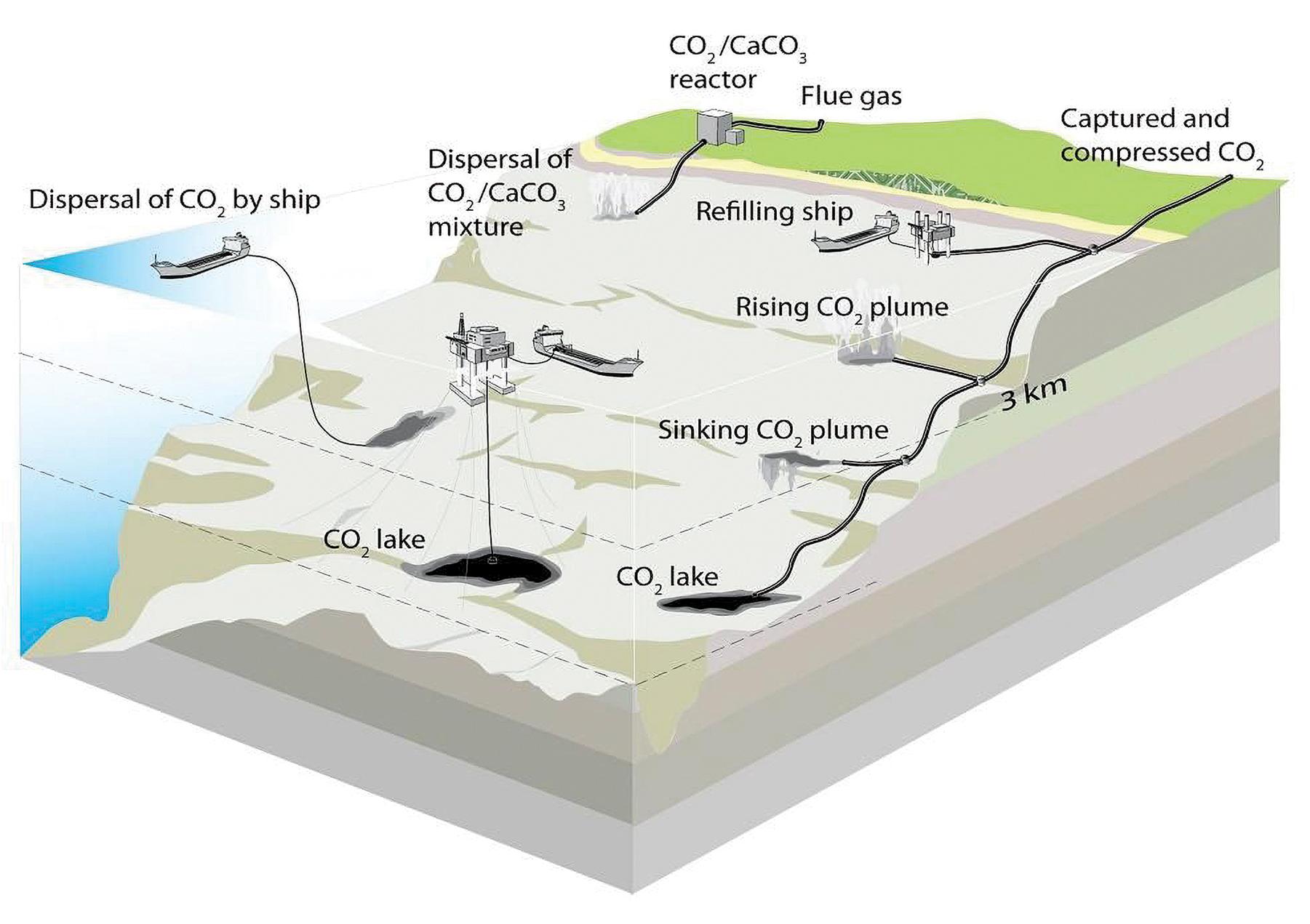Seafloor Protection
Seafloor protection involves various strategies to mitigate climate change by leveraging the ocean's capacity to store carbon and support marine ecosystems. These strategies include carbon capture and storage, ocean fertilization, and seagrass restoration.

Injecting CO2 into the Deep Ocean (U.S. Naval Institute)
View open jobs in this Solution
Example Organizations
- Carbon Sequestration Leadership Forum - Promotes carbon capture and storage technologies.
- Global Ocean Commission - Advocates for ocean health and sustainable management.
- Ocean Health Index - Measures ocean health and informs policy.
Overview�
Recent advancements have highlighted the potential of the seafloor in mitigating climate change. Key technologies include carbon capture and storage, ocean fertilization, and seagrass restoration. These methods aim to enhance carbon sequestration and support marine ecosystems.
- Injecting CO2 into the Deep Ocean - U.S. Naval Institute
Progress Made
Significant advancements have been made in seafloor protection technologies:
- Carbon Capture and Storage (CCS): Injecting CO2 into seafloor sediments to store carbon dioxide.
- Ocean Fertilization: Boosting marine plant growth to absorb CO2.
- Seagrass Restoration: Restoring seagrass meadows to capture and store significant amounts of carbon.
Case Studies:
- Carbon Engineering, Canada: Develops direct air capture technology and explores seafloor carbon storage (Carbon Engineering). While promising, the long-term environmental impacts require further study.
- Ocean Power Technologies, USA: Develops ocean thermal energy conversion and tidal energy technologies (Ocean Power Technologies). The scalability and economic viability of these technologies remain challenges.
- Marine Renewables Canada, Canada: Promotes marine renewable energy solutions (Marine Renewables Canada). The integration of renewable energy with seafloor protection efforts is beneficial but requires further research.
Lessons Learned
- Development Stage: The technology is budding, presenting both challenges and opportunities.
- Mixed Outcomes: While there have been successes, failures also mark the journey.
- Learning Curve: Failures provide valuable insights to enhance the technology.
- Collaboration: Engaging with seasoned experts and entities knowledgeable about the technology is crucial.
- Comprehensive Strategy: Seafloor protection should be part of broader carbon reduction efforts.
Challenges Ahead
- Proven Efficacy: The nascent stage of the technology demands rigorous testing on a large scale.
- Environmental Impact: Long-term effects of seafloor protection remain unknown.
- Ecosystem Concerns: Potential impacts on oceanic ecosystems need further investigation.
- Support Issues: Both financial and political backing are crucial for technology implementation.
Leading Entities:
- The Ocean Cleanup Foundation - Focuses on removing plastic from oceans but also supports broader ocean health initiatives.
- Seaweed Industry Association - Promotes the sustainable use of seaweed for carbon sequestration.
- International Maritime Organization - Regulates shipping and promotes marine environmental protection.
- UN Environment Programme - Supports global environmental initiatives, including ocean health.
Best Path Forward
- Research & Development: Continuous effort in technology advancement is paramount.
- Global Outreach: Making the technology accessible globally is key for widespread adoption.
- Education & Affordability: Promote understanding of seafloor protection benefits and ensure cost-effectiveness.
- Policy Support: Implement policies and regulations that encourage seafloor protection efforts.
- Collaboration: Foster partnerships between governments, organizations, and the private sector to drive progress.
Prominent supporters include the US Geological Survey, National Oceanic and Atmospheric Administration, and International Union for Conservation of Nature.
Image credit: U.S. Naval Institute